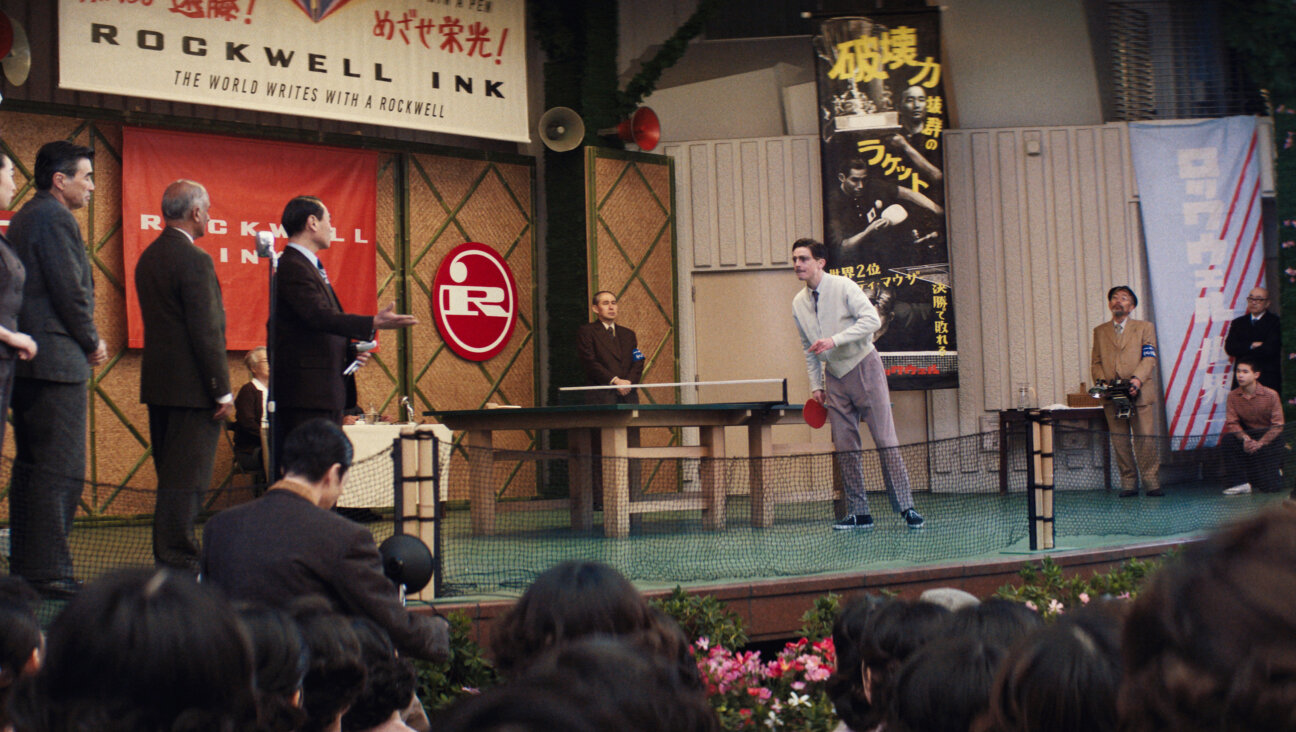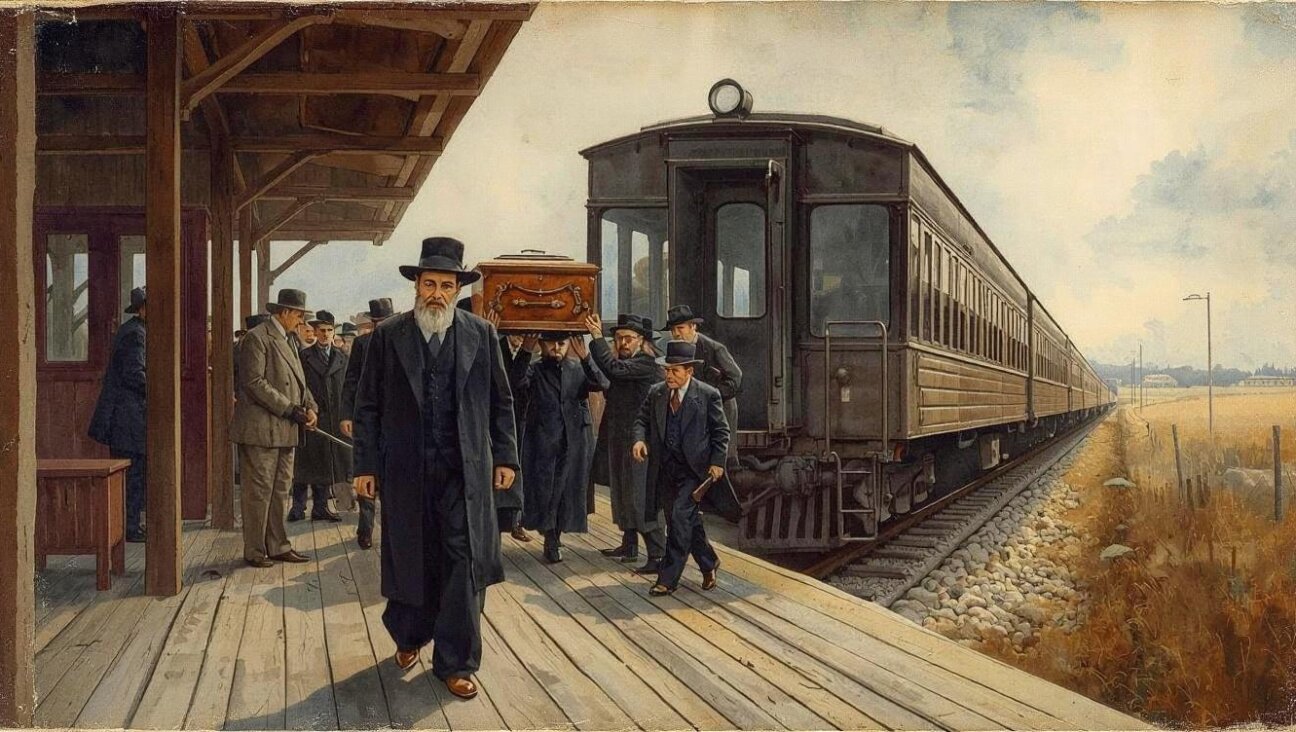The Nazis would have embraced these elite Germans — nevertheless, they resisted
Jonathan Freedland’s latest explores why a small group of aristocrats, army officers, diplomats and teachers joined a ‘Traitors Circle’

‘The Traitors Circle’ is Jonathan Freedland’s follow-up to ‘The Escape Artist,” which traced the story of the first and only Jewish prisoners to escape from Auschwitz. Courtesy of Harper
The Traitors Circle : The True Story of a Secret Resistance Network in Nazi Germany—and the Spy Who Betrayed Them
By Jonathan Freedland
Harper, 480 pages, $26
Sometimes resistance is just mindfully walking around the streets of Berlin with shopping bags in both hands so that you have a reason not to give the Heil Hitler salute. As Jonathan Freedland told the audience at a live taping of John Heileman’s Impolitic podcast, that was the practice of Countess Lagi von Ballestrem — one of the two countesses in the “Traitors Circle” that gives his new book its title. Though members of the circle were involved in more significant opposition to the Nazi regime, this small, practical, personal act of defiance sings to us at our own moment of mounting authoritarianism.
Following on from his 2022 book, The Escape Artist, which traced the story of the first and only Jewish prisoners to escape from Auschwitz through their pre-War lives, capture and imprisonment, flight and depressingly unsuccessful attempts to convince Jewish and wartime governments to take action, Freedland turns his attention to a tea party. At roughly the same time as the events of his other book, these upper-class non-Jews in Berlin met regularly for companionship, dissent and mild subversion. It’s an entirely different form of resistance from Rudolf Vrba’s heroic escape, but one that speaks more directly to our time.
Freedland and his researcher Jonathan Cummings, were tipped off to the existence of this previously little-known coterie of “traitors” by the transcript of a speech from Heinrich Himmler to high-ranking Nazis in August 1944. He was referring to these regular anti-Nazi social gatherings hosted by widow of the late German Imperial Foreign Minister Wilhelm Solf. Just after Operation Valkyrie’s attempt to assassinate Adolf Hitler had failed. Himmler — head of the SS, architect of the Shoah, and Hitler’s number two — reassured attendees that the SS was in full control and had also foiled a “traitors circle” from the “reactionary cabal” who were “prattling over tea” at the home of the Widow Solf.
As its subtitle suggests, The Traitors’ Circle tells the story of a small group of German men and women — aristocrats, army officers, diplomats, teachers — who saw what their government had become and decided to fight it from within. From the countesses like von Bellestrem and Maria von Maltzan, to wealthy mandarins like Arthur Zarden, to protestant nobility like Elisabeth von Thadden, they were German insiders, not romantic rebels or racially suspect. They, mostly, came from the right families, wore the right uniforms, spoke with the right accents, and moved in the right circles. Yet, even a decade into the Nazi takeover of Germany, they resisted.
In a breathless prose that he developed in his side hustle as thriller writer Sam Bourne, Freedland dashes through the histories and stories of the seven or eight main characters. The cadence can sometimes be a little repetitive and annoying, but for the most part, it shuttles through the nearly 400 pages of the story in entertaining, if horrifying, fashion. As is the case with the The Escape Artist, though, the events are entirely true. The hardback stretches to more than 450 pages because, to reinforce its facticity, it contains 30 character summaries, maps, more than 45 pages of endnotes and almost the same number of pages listing sources.
The book mainly centers on the time between the Solf-group celebrating Anza von Thadden’s birthday and surviving interrogation at Ravensbrück concentration camp. In sections, though, it extends well before that time to establish the backstories of the resisters, their betrayer, and some of the Nazi elite that prosecuted them. These backstories are crucial to understand not only what they did – hide Jews, sabotage the army, encourage army intelligence to desert – but what gave them the perspective and the moral compass to stand up against a state that would have happily embraced them.
Freedland has noted that, though 3 million Germans were arrested and imprisoned for their anti-Nazi activities, they represent only 5% of the German population. Even before the Nazis had fully consolidated their power over the country, the vast preponderance of people and corporations went along with the vicious lies that legitimized the Reich. Education, empathy, experience of other countries and cultures, true patriotism unfounded in personality cults, and a religious moral upbringing are some of the traits that impelled them to oppose the inhumanity of the regime.
Sadly, corporations like BMW, Porsche, and IG Farben were also deeply complicit in the Nazi takeover. Indeed, Freedland notes that Siemens drew slave labor from the prison population at Ravensbrück, where the Solf-group was held. During the Nazi era, corporations willingly took money and economic control in exchange for loyalty.
Today, corporations are massive but equally tractable. Advances in technology mean that their control of capital and information dwarfs even the great corporations of the past like the East India Trading Company or U.S. Steel. Furthermore, economic logic dictates that they must maximize profit so, especially when faced with egregious retaliation from an ideologically-driven regulatory power, they toe the line. Indeed, corporations throughout modern history have mostly acted as a lever of ideological power not as a bulwark.
From Pharaonic atrocities in antiquity, through capitalist colonial processes like the African Slave Trade to the murder of millions in the Russian and Chinese Revolutions, humans have been cruel and inhuman to other humans for millennia. As Kafka and Orwell recognized, though, the truly frightening potential of the 20th century – being realized in the 21st — is when the networks and system of the modern state are mobilized to identify, delegitimize, isolate and destroy individuals or groups it designates as undesirable.
Every act of resistance teaches the system what it cannot understand. That’s as true of dissenting Germans in 1943 as it is of whistleblowers and protesters today. Freedland’s conspirators exposed the blind spots of totalitarian logic: that obedience cannot erase morality, that even the most efficient machine depends on the fragile cooperation of individuals.
Their story reads as both a historical thriller and a moral syllabus. Resistance is not a fixed ideology; it’s a form of literacy. You learn how to read the shapes of power and to write between its lines.
In his theoretical discussion of the concept of “resistance” in “Resistances to Psychoanalysis,” Jacques Derrida talks about the emotional pull of the term. He begins nostalgically, thinking about the resonance of the French Resistance “blowing up trains, tanks, and headquarters between 1940 and 1945,” but spends the rest of the book backing away from that macro, material definition. For his part, Freedland shows that resistance is not simply heroic, even violent, self-assertion but rather can be deliberate, pre-planned or responsive, acts of mindfulness. It teaches us to see how ordinary habits — bureaucratic procedures, polite greetings, professional codes — become instruments of control, and how they can also be reclaimed as tools of subversion.
Indeed, in a world of misinformation overload where so many of the platforms that feed us our news and opinions are corrupt — by state interests (TikTok), laissez faire enrichment (Meta), or billionaire racism (X/Twitter) — copious, accessible notes and references are Freedland’s full shopping bags. Presenting the truth is sadly a mark of resistance in a decade marked by lies, propaganda, and deliberate attempts to rewrite the historical record.
















